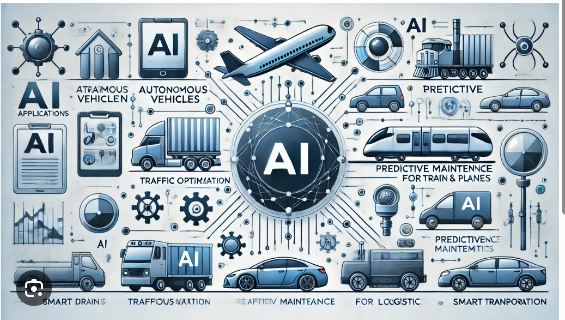Artificial Intelligence (AI) is transforming industries across the board, from healthcare to finance, retail to agriculture. At the heart of this transformation lies one crucial process: training AI systems. Training an AI model is a structured and iterative journey that involves feeding it data, refining its parameters, and evaluating its performance. One of the most effective ways to approach this process is by using real-world use cases to guide development.
This article explores how to train AI using practical use cases, illustrating the steps involved, types of AI training, and examples from various industries.
Understanding the Basics of AI Training
Before diving into use cases, it’s essential to understand what AI training entails. AI models—especially those based on machine learning and deep learning—learn patterns from historical data how to train ai with use cases The model uses this data to make predictions or decisions without being explicitly programmed.
There are generally three types of machine learning methods:
- Supervised Learning: The model is trained on labeled data. For example, a spam filter is trained on emails tagged as “spam” or “not spam.”
- Unsupervised Learning: The model is trained on unlabeled data and finds patterns or groupings on its own. For instance, clustering customers based on purchasing behavior.
- Reinforcement Learning: The model learns by interacting with an environment and receiving feedback via rewards or penalties. This is often used in robotics and game AI.
Training involves multiple iterations of feeding data, adjusting weights (in neural networks), and validating performance. When paired with specific use cases, training becomes more focused and results-oriented.
Why Use Cases Matter in AI Training
Use cases are specific scenarios or problems that an AI solution is designed to solve. They provide clear goals, measurable outcomes, and context for data. Here’s why training AI with use cases is effective:
- Purpose-driven: You train the AI to solve a particular problem rather than trying to make it intelligent in general.
- Data relevancy: You gather or generate training data that directly reflects real-world applications.
- Focused evaluation: You can assess success based on real KPIs (Key Performance Indicators).
- Iterative improvement: The model evolves with feedback from deployment scenarios.
Steps to Train AI Using Use Cases
1. Define the Use Case
The first step is to clearly define the problem you’re trying to solve. For example:
- Detecting fraudulent transactions in banking.
- Diagnosing diseases from medical images.
- Personalizing product recommendations for e-commerce users.
This definition guides data collection, model selection, and evaluation metrics.
2. Collect and Prepare Data
Data is the fuel for AI. Based on the use case, you’ll need to gather data that reflects the real-world scenario. For a fraud detection system, this could include transaction histories, geolocations, timestamps, and customer profiles.
Data preparation involves:
- Cleaning: Removing duplicates, errors, and irrelevant information.
- Labeling: For supervised learning, this step is crucial.
- Splitting: Dividing the data into training, validation, and test sets.
- Augmentation: For image or text data, techniques like rotation, cropping, or paraphrasing may be used to enrich the dataset.
3. Choose the Right Algorithm
The choice of algorithm depends on the use case. Some common ones include:
- Decision Trees: For interpretable decision-making, such as loan approval.
- Convolutional Neural Networks (CNNs): Ideal for image recognition tasks.
- Recurrent Neural Networks (RNNs): Used in time-series analysis or natural language processing.
- Transformers: The go-to architecture for language models like ChatGPT and BERT.
For example, in a customer churn prediction model, gradient boosting machines (like XGBoost) are often highly effective.
4. Train the Model
This involves feeding the training data to the algorithm and allowing it to learn. You’ll monitor metrics such as accuracy, loss function, precision, recall, and F1-score to evaluate the training progress.
Key concepts include:
- Epochs: The number of times the model sees the entire dataset.
- Batch Size: Number of samples the model processes at once.
- Learning Rate: How quickly the model updates its knowledge.
- Regularization: Prevents overfitting by penalizing overly complex models.
5. Validate and Test
Once trained, the model is validated using the validation set to fine-tune hyperparameters. Then, it is tested against a separate dataset to evaluate how well it generalizes to new data.
Common evaluation metrics (based on use case) include:
- Accuracy: Useful in balanced classification problems.
- ROC-AUC: For binary classification with imbalanced classes.
- Mean Absolute Error (MAE) or RMSE: For regression problems.
- BLEU/ROUGE: For language generation tasks.
6. Deploy and Monitor
After testing, the model is deployed into production. Continuous monitoring ensures that the AI performs well under real-world conditions. This phase includes:
- Model Drift Detection: Checking if the input data distribution changes over time.
- A/B Testing: Comparing the new AI model with the current system.
- Feedback Loops: Capturing new data and retraining the model periodically.
Real-World Use Cases of AI Training
Use Case 1: Healthcare – Diagnosing Pneumonia from X-rays
- Problem: Radiologists are overloaded, and diagnostic accuracy varies.
- Data: Thousands of labeled X-ray images with diagnoses.
- Model: A CNN trained to detect signs of pneumonia.
- Outcome: High accuracy in image classification, with support for radiologists.
Use Case 2: Finance – Fraud Detection
- Problem: Detect fraudulent credit card transactions in real-time.
- Data: Historical transaction records, including amount, location, and user history.
- Model: Anomaly detection or supervised classification (Random Forest or Neural Network).
- Outcome: Reduced false positives, higher fraud capture rate.
Use Case 3: Retail – Personalized Recommendations
- Problem: Increase conversion rate on an e-commerce platform.
- Data: User behavior, past purchases, product metadata.
- Model: Collaborative filtering, content-based filtering, or hybrid recommendation engines.
- Outcome: Enhanced user engagement and sales.
Use Case 4: Agriculture – Crop Disease Detection
- Problem: Farmers need early alerts about plant diseases.
- Data: Images of crops with and without disease, environmental data.
- Model: CNN for image classification, perhaps combined with IoT sensor data.
- Outcome: Early intervention, better yield.
Use Case 5: Customer Support – Chatbots
- Problem: Automate customer support to reduce human workload.
- Data: Historical chat logs, FAQs, support tickets.
- Model: NLP models like transformers (e.g., BERT, GPT).
- Outcome: 24/7 support, quicker response times, reduced operational cost.
Best Practices When Training AI with Use Cases
- Start Small: Focus on one clear use case with achievable objectives.
- Iterate Rapidly: Train, test, and refine the model in short cycles.
- Explainability Matters: Choose interpretable models where necessary, especially in regulated industries.
- Human-in-the-Loop: Keep human oversight in high-stakes environments.
- Ethics and Bias: Ensure your data and model do not reinforce societal biases or harm.
Conclusion
Training AI with use cases is a targeted, efficient approach to creating valuable AI systems. It ensures alignment between technical development and business needs while grounding AI in real-world problem how to train ai with use cases By defining clear objectives, collecting relevant data, choosing the right models, and iterating based on feedback, organizations can successfully deploy AI that makes a tangible impact.
As AI technology evolves, the synergy between domain-specific use cases and advanced training techniques will continue to unlock new possibilities—turning data into intelligent decisions across every industry.








Leave feedback about this